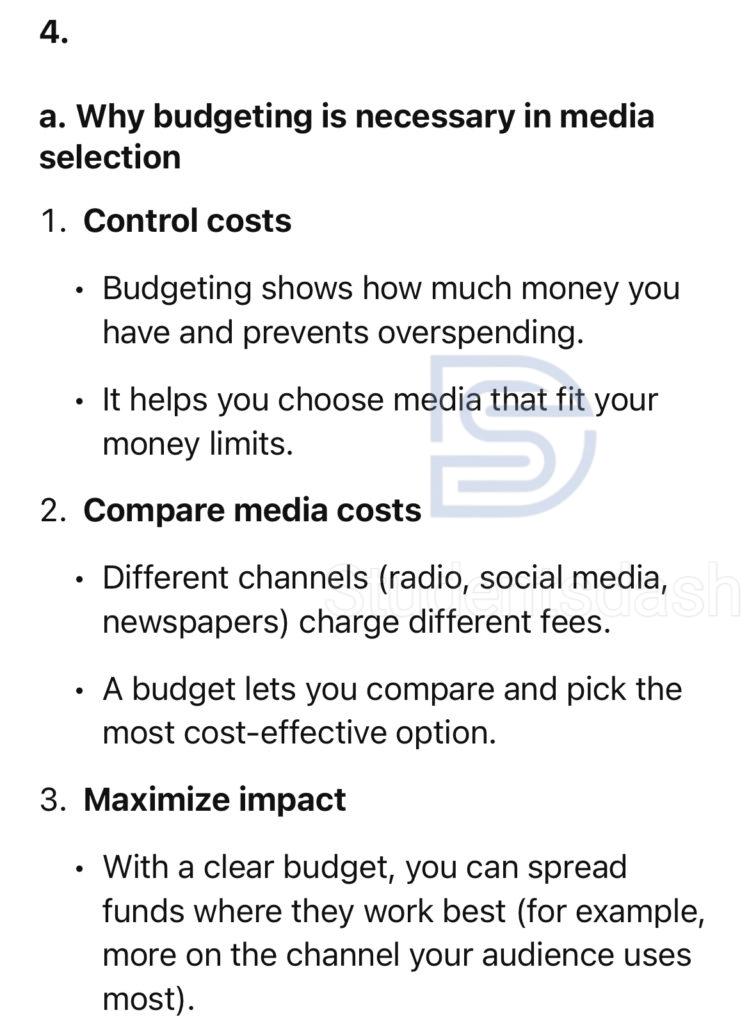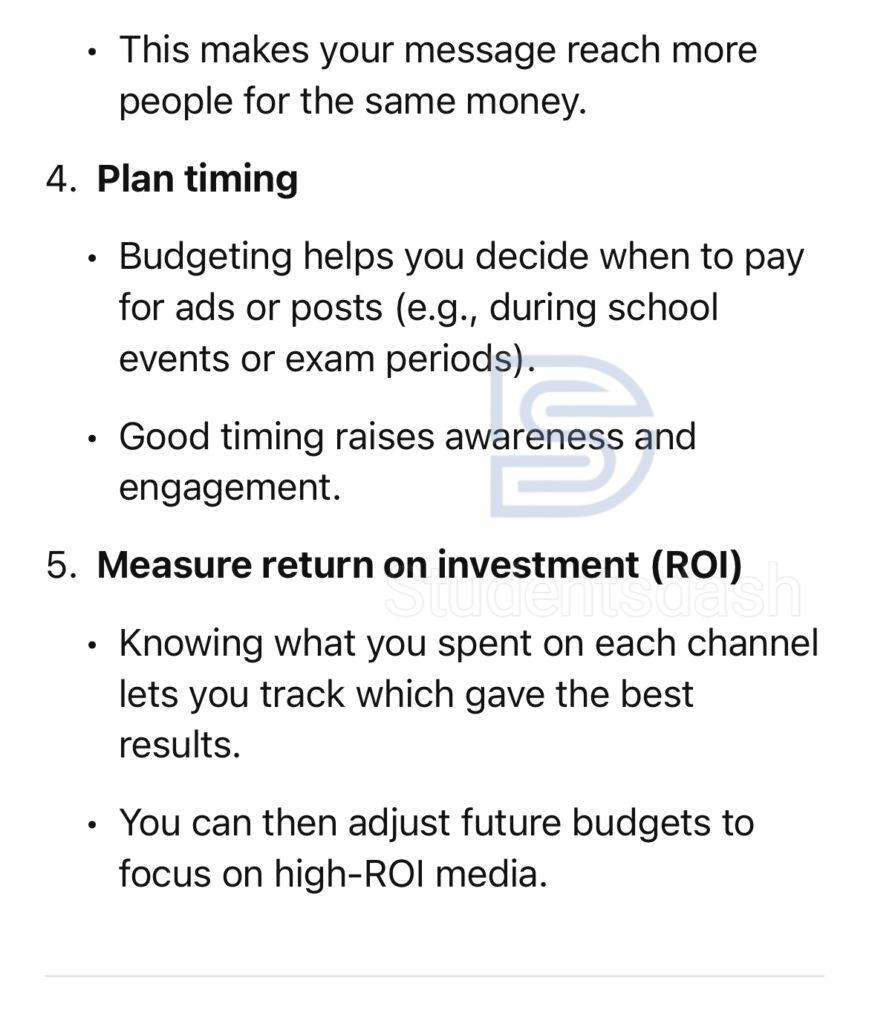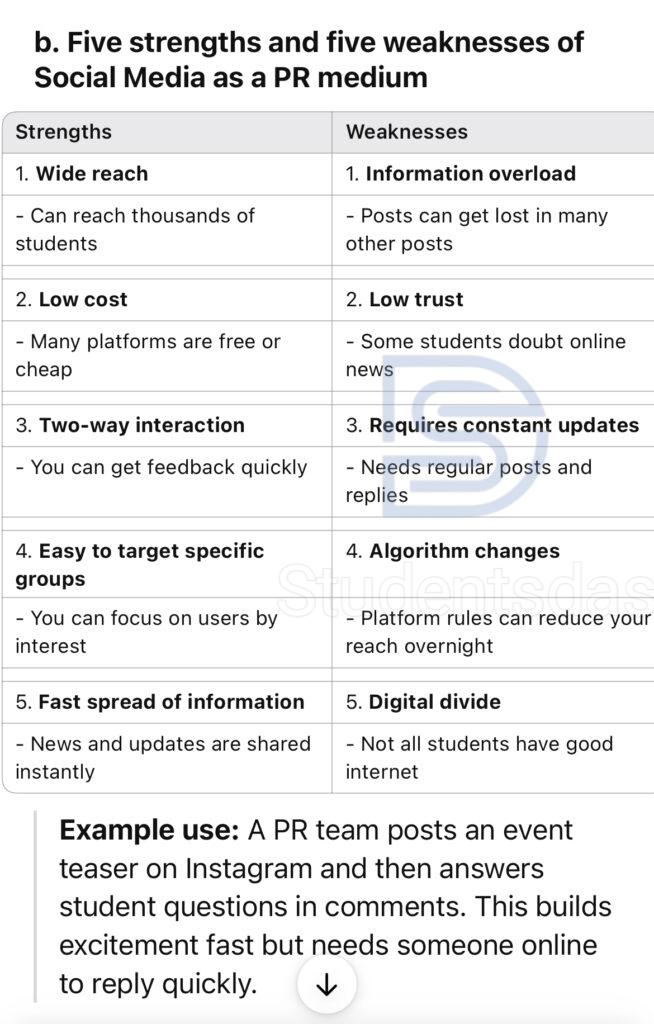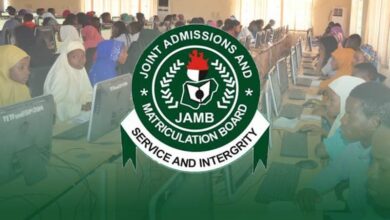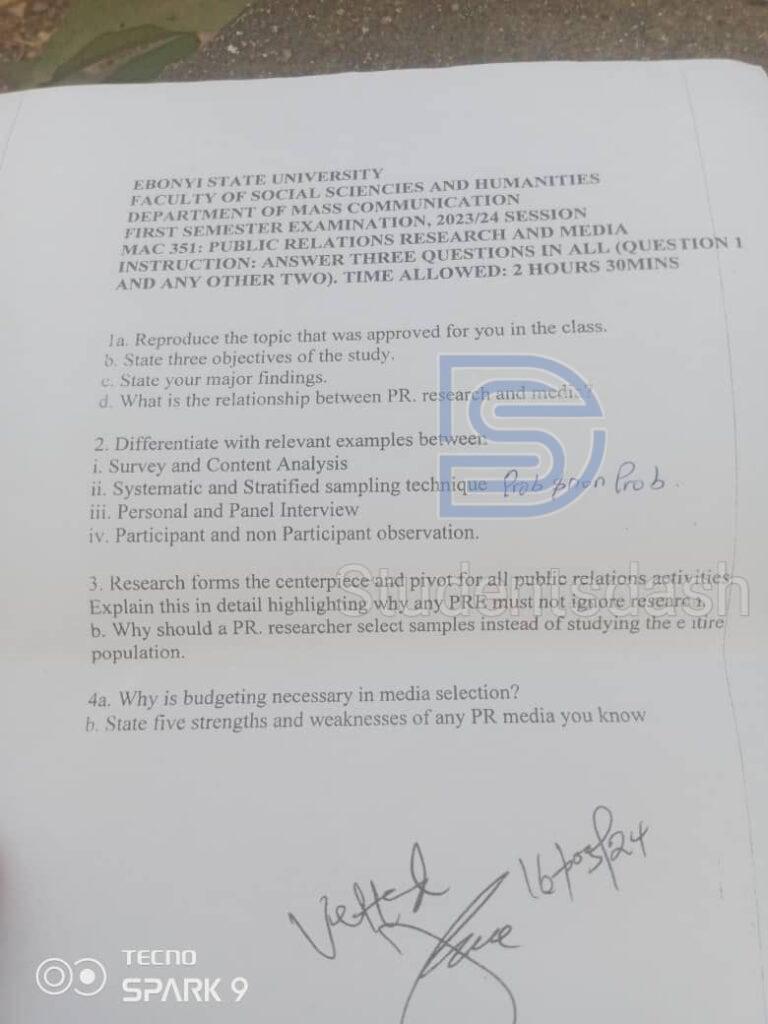
1.
a. My approved topic is:
“The Impact of Social Media on Student Engagement at Ebonyi State University.”
b. Three objectives of the study:
- To find out how often students use social media for learning.
- To identify the benefits students get from using social media.
- To give ideas on how to improve social media use for study.
c. Major findings:
- Most students check social media daily for class updates.
- Social media helps students share notes and discuss topics.
- Some students get distracted by non‑academic posts.
d. Relationship between PR, research and media:
- Research gives PR people facts about their audience.
- Media are the channels (like radio, social media) PR uses to talk to people.
- Good PR uses research to pick the right media and share the right message.
2. Differentiate with examples:
i. Survey vs Content Analysis
- Survey: You ask people questions.
- Example: Give a questionnaire to 100 students about their use of social media.
- Content Analysis: You study texts, videos, or ads to find patterns.
- Example: Count how many times “exam tips” appear in five issues of the campus magazine.
ii. Systematic vs Stratified Sampling
- Systematic Sampling: You pick every nth person from a list.
- Example: From a list of 200 students, choose every 10th name.
- Stratified Sampling: You divide population into groups (strata) then sample each group.
- Example: Split students by faculty (Mass Comm, Sci, Arts), then randomly pick 10 students from each faculty.
iii. Personal vs Panel Interview
- Personal Interview: You interview different people one time each.
- Example: Talk to 30 students once about campus radio.
- Panel Interview: You interview the same group of people over time.
- Example: Interview the same 10 students every month about their media habits.
iv. Participant vs Non‑Participant Observation
- Participant Observation: You join the group you study.
- Example: Sit in and join a student media club meeting to see how they plan events.
- Non‑Participant Observation: You watch without joining.
- Example: Observe from the back of the room how students behave in a lecture.
3a. Research is the centrepiece and pivot for all public relations activities because:
- Understanding the audience:
- Research helps us know who our audience is, what they like, and what they need.
- For example, a survey can tell us if students prefer Instagram or email for news.
- Defining clear objectives:
- Before any PR work, we use research to set goals (e.g., increase event attendance by 20%).
- This makes our campaigns focused and measurable.
- Choosing the right message and media:
- Research shows which messages connect best and which channels reach most people.
- For instance, content analysis of campus posts can reveal that short videos get more views than long articles.
- Planning and budgeting:
- Good research lets us plan steps and decide how much money to spend on each media outlet.
- It prevents wasted resourcesy on channels that won’t work.
- Measuring success:
- After a campaign, research (like polls or web analytics) tells us what worked and what didn’t.
- This feedback loop helps us improve future PR activities.
Without solid research, PR efforts become guesses, risk failing, and waste time or money.
3b. A PR researcher selects a sample instead of studying the entire population because:
- Cost and time efficiency:
- Studying every single person (the whole population) is expensive and slow.
- A well‑chosen sample gives reliable results much faster.
- Practicality:
- It is often impossible to reach every individual (some may be absent, unlisted, or unreachable).
- A sample of 100–200 people can represent a campus of thousands.
- Manageable data:
- Handling data from a sample is easier to organize and analyze.
- Large datasets can be confusing and prone to error.
- Accuracy with proper design:
- If we use systematic or stratified sampling, the sample reflects the whole group’s traits.
- This ensures findings (like student opinions) are valid and trustworthy.
- Resource allocation:
- Limited funds and staff mean sampling lets us focus effort where it matters most.
- We can invest more in quality questions and analysis instead of broad coverage.
By using samples correctly, PR researchers save time and money while still producing results that accurately guide PR decisions.
